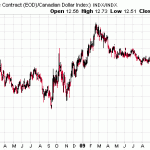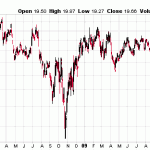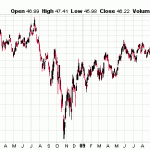Since my Starbucks Duetto card was discontinued by Starbucks and/or Royal Bank of Canada, my intention was to take the new credit card RBC delivered and just use it as a backup card (after cashing out the 3000 points for gas money). When calling the credit card activation number, I was fully prepared for the script. You punch in your credit card number over the phone, get transferred to a person that then asks you for your credit card number (presumably because the information doesn’t get passed onto his computer screen?), name, birthdate and then says “While the activation is processing, as a valued RBC customer, I would like to offer you……..” and then went through a bunch of legal gibberish about their “balance protector insurance”. I have heard this spiel before. The guy’s accent (obviously Indian) was so thick that I had difficulty listening to him. He spoke it so fast that I’m amazed anybody would be able to understand him.
However, what was interesting was how they phrased the last question. “So, Mr. Peter, do you believe that maintaining your credit rating in the event that you cannot pay your credit card balance is important?”. This was a new way of phrasing it. Before they just simply asked “Would you like balance protector to protect yourself against your inability to pay a credit card if there is a life-threatening hurricane in your area?”
Most people have a huge psychological difficulty in saying “no”. I am not sure why, but it is taking advantage of the old-style Victorian culture of politeness. Most charities and aggressive marketers always love phrasing questions in such ways that it is very difficult to say no – from political life, “can I count on your support?” is the typical question asked. As soon as you answer in an ambiguous manner, they draw you in for more.
Anyhow, I said “NO, I am not interested in the offer” and left it at that. The fellow on the phone continued, “Because RBC values your opinion, tell me why…” – as much as I would like to get into an argument with the call center guy, I know it would be just a waste of time. First of all, RBC doesn’t care what I think. In fact, I know what RBC and all credit card companies think – I’m part of a statistical pool, and they don’t care what I think at all, as long as I pay the balance (with or without interest, preferably with interest) occasionally. The even more insulting part is that the line “While the card is activating, let me sell you this crap” is complete garbage, simply because activation happens as soon as the guy clicks a button on the keyboard and doesn’t take one minute to go through the system. The guy just says it to launch into a marketing pitch that his employer tells him to.
I can’t believe that people actually agree for the ancillary garbage, but since they have it on the books, they must be able to get enough suckers to warrant annoying the 97% of people that just want the card activated and to get on with their lives.



